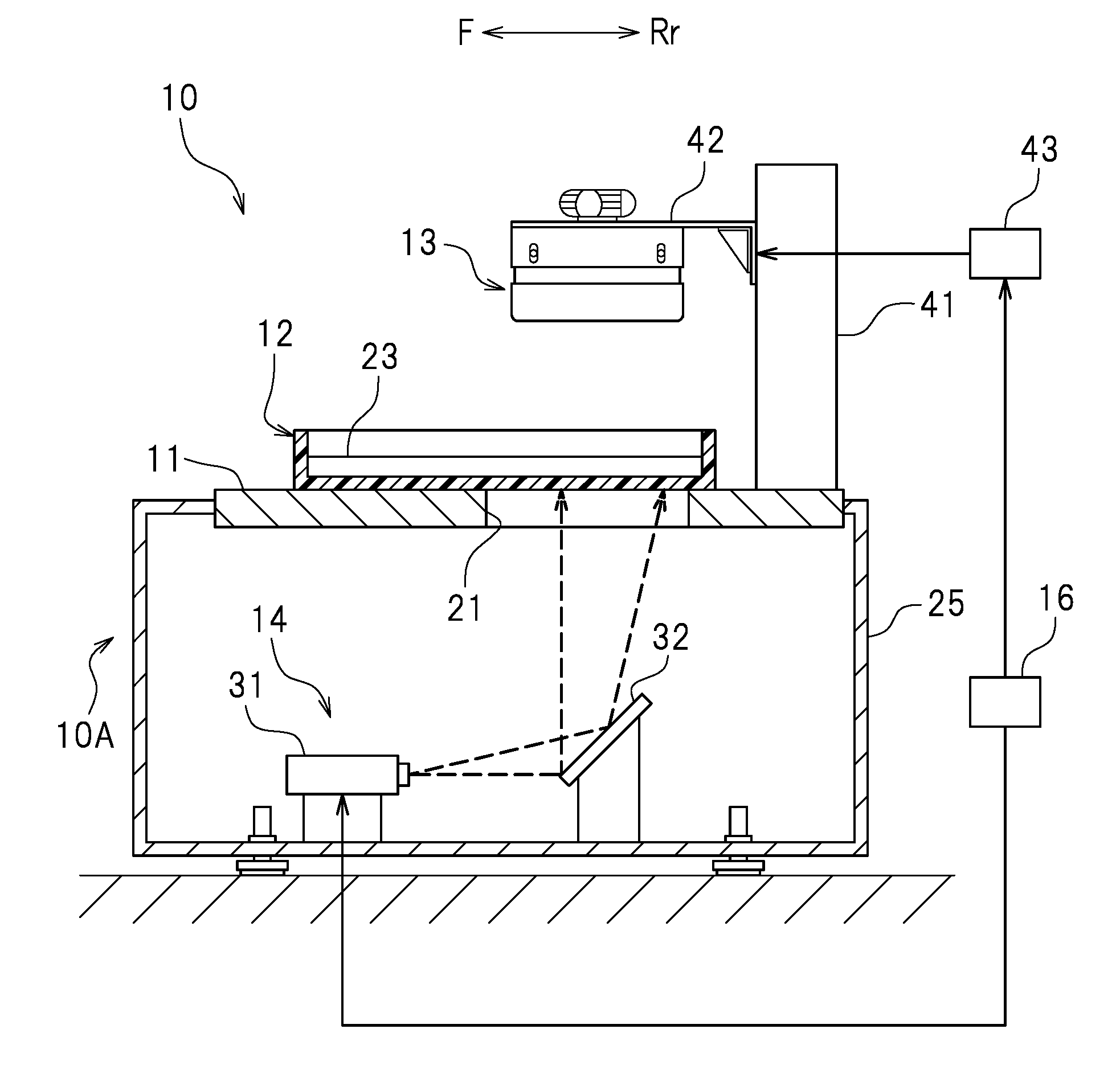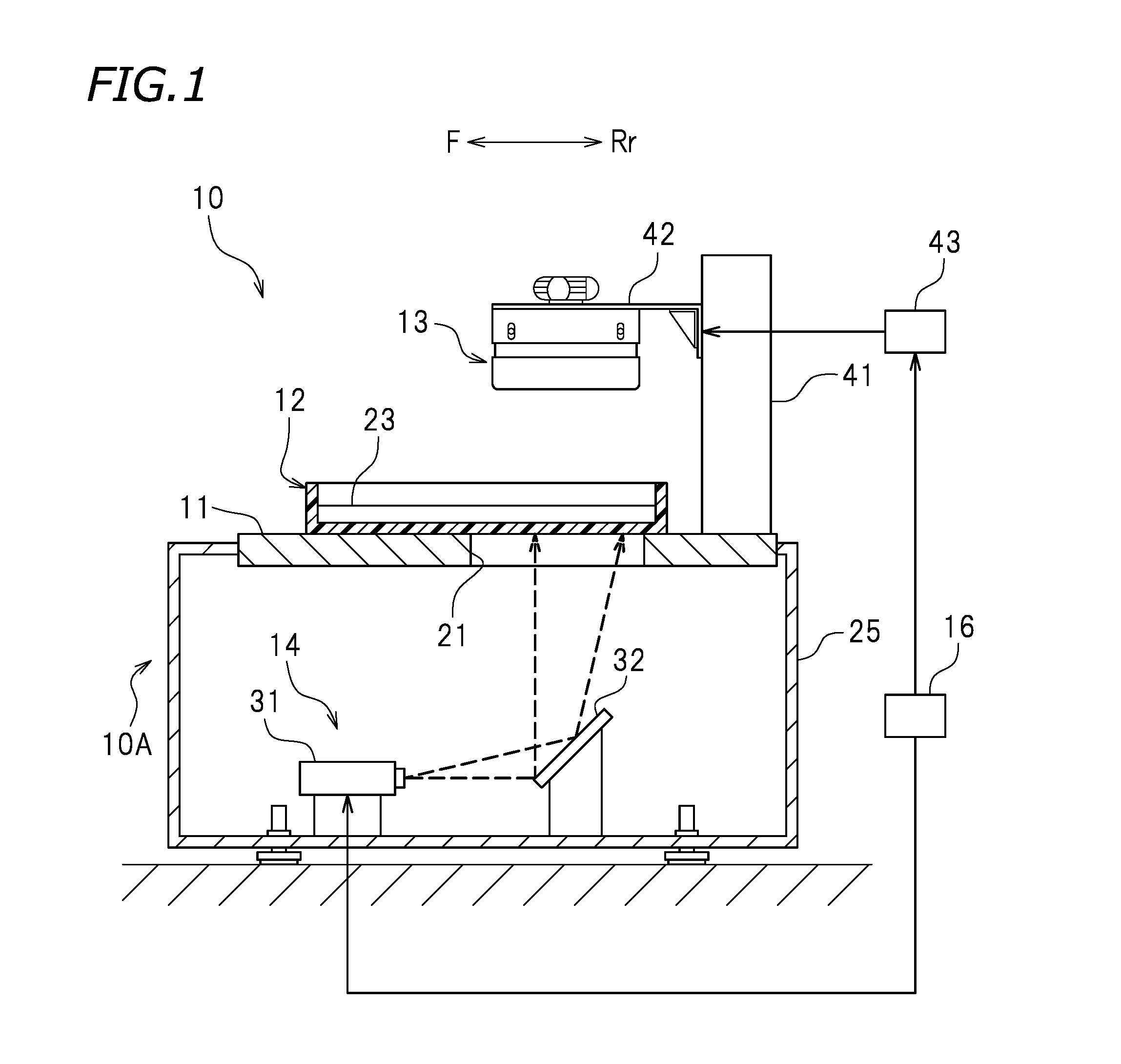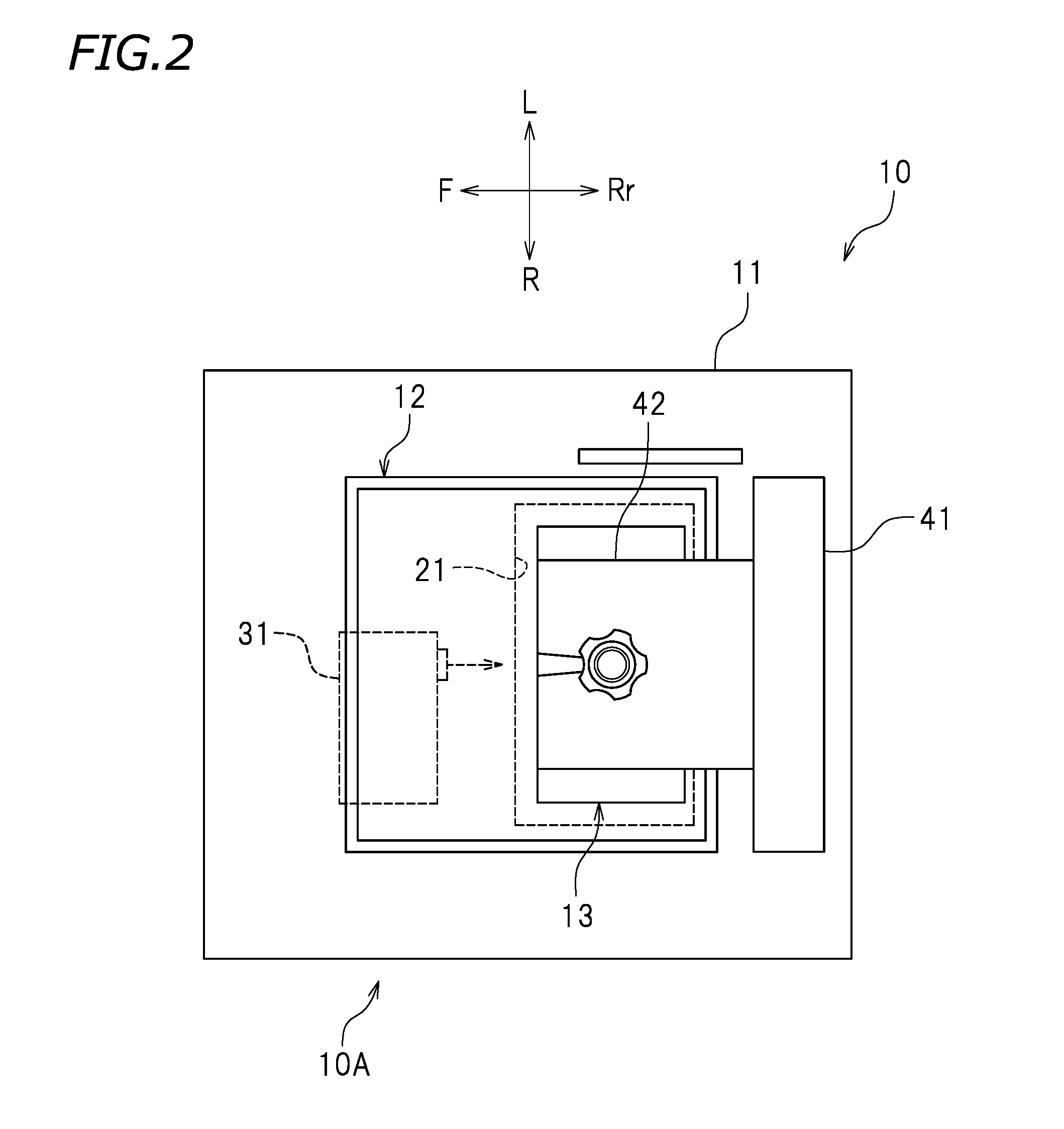Slice image creation device and three-dimensional printing system
a three-dimensional printing and image creation technology, applied in image enhancement, programme control, instruments, etc., to achieve the effect of reducing the computation load, and reducing the amount of data
- Summary
- Abstract
- Description
- Claims
- Application Information
AI Technical Summary
Benefits of technology
Problems solved by technology
Method used
Image
Examples
embodiment 1
Preferred Embodiment 1
[0050]FIG. 1 is a cross-sectional view of a three-dimensional printing system 10 in this preferred embodiment. FIG. 2 is a plan view of the three-dimensional printing system 10. In the drawings, letters F, Rr, L and R respectively represent front, rear, left and right. These directions are provided merely for the sake of convenience, and do not limit the form of installation of the three-dimensional printing system 10 in any way.
[0051]The three-dimensional printing system 10 is a system that prints a three-dimensional object. As shown in FIG. 1, the three-dimensional printing system 10 includes a three-dimensional printing device 10A and a slice image creation device 100 (see FIG. 5). A cross-sectional shape of a three-dimensional object is prepared in advance. The three-dimensional printing device 10A cures a photocurable resin in a liquid state to form a resin layer having a shape corresponding to a prepared cross-sectional shape of a three-dimensional object...
embodiment 2
Preferred Embodiment 2
[0095]FIG. 18 is a perspective view of a target object model 110. FIG. 19 shows a topology list 120 of the target object model 110 shown in FIG. 18. Even the target object model 110 shown in FIG. 18 may be divided into a plurality of divided object models to create target slice images. In this example, a procedure of dividing the target object model 110 will be described.
[0096]First, like in step S103 shown in FIG. 6, the division determination processor 58 calculates the number of topology groups from the topology list 120 shown in FIG. 19. The topology list 120 shown in FIG. 19 includes topology groups T41 and T42. Therefore, the number of the topology groups is “2”, namely, there are a plurality of topology groups. The division determination processor 58 determines whether or not there is an apex, among the apexes defining the target object model 110, at which the target object model 110 is divided in correspondence with the topology groups. In this example,...
PUM
| Property | Measurement | Unit |
|---|---|---|
| thickness | aaaaa | aaaaa |
| colors | aaaaa | aaaaa |
| photocurable | aaaaa | aaaaa |
Abstract
Description
Claims
Application Information
 Login to View More
Login to View More - R&D
- Intellectual Property
- Life Sciences
- Materials
- Tech Scout
- Unparalleled Data Quality
- Higher Quality Content
- 60% Fewer Hallucinations
Browse by: Latest US Patents, China's latest patents, Technical Efficacy Thesaurus, Application Domain, Technology Topic, Popular Technical Reports.
© 2025 PatSnap. All rights reserved.Legal|Privacy policy|Modern Slavery Act Transparency Statement|Sitemap|About US| Contact US: help@patsnap.com



